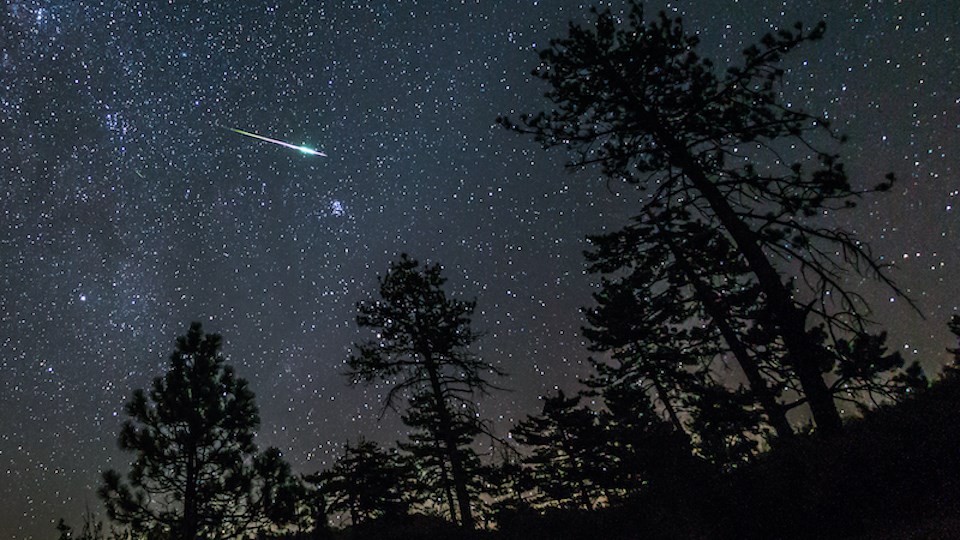Stargazers will have a couple of reasons to cast their eyes toward the heavens this fall in Metro Vancouver.
As the final days of the Perseid meteor shower waned down toward the end of August, the first couple of weeks of September haven't afforded any opportunities to view shooting stars in the Lower Mainland.
But keen sky-watchers will start to see astral activity in the region as another meteor shower commences in late September. The Orionid meteor shower is slated to begin on Sept. 26 and continue through Nov. 22.
The medium-strength shower will peak from Oct. 20 to Oct. 21, when the moon is 21 per cent full. The American Meteorological Society (AMS) notes that the shower can sometimes reach "high strength activity," putting it on par with the aforementioned Perseid meteor shower (one of the brightest showers of the year). On average, the Orionids produce roughly 10 to 20 shooting stars but in exceptional years they may produce up to 50 to 75 per hour.
The Southern Taurid meteor shower will kick off just a couple of days after the Orionids, on Sept. 28, and continue into the following month, ending on Dec. 2. However, it is only viewable from the southern hemisphere.
A third meteor shower, the Northern Taurids, will also begin during this period, with activity showing as early as Oct. 13 and carrying on through to roughly Dec. 2. This is the shower that folks in Metro Vancouver will be able to observe locally.
In a previous interview, Jennifer MacDonald, an astronomer at the H.R. MacMillan Space Centre, told Vancouver Is Awesome that although the shower's meteors have a slower rate (about five of them appear each hour), they are made of a "heavier material," which "increases the possibility of fireballs a bit."
This might also be a big year for the Northern Taurids. The AMS notes that "there seems to be a seven-year periodicity with these fireballs. 2008 and 2015 both produced remarkable fireball activity. 2022 may be the next opportunity."
Sadly, the moon will be about 88 per cent full at the shower's peak, which could make it more difficult to observe.
What is a fireball?
The American Meteorological Society describes a fireball as a "very bright meteor" that is about the same brightness as the "planet Venus in the morning or evening sky." Additionally, some people report seeing vivid colours because the brightness is "great enough to fall well within the range of human colour vision." Some of them even report hearing "sonic booms, and electrophonic sounds," albeit very rarely.
In order to view the Taurid shower, sky-watchers should search for the constellation Taurus, said MacDonald. "Look for Orion's belt and then go northeast and look for the bright red star, Aldebaran."
The Orionid shower is visible anywhere on Earth and is considered a "medium strength shower." Space.com notes that "If you find the shape of Orion, the hunter, the meteor shower's radiant (or point of origin) will be near Orion's sword, slightly north of his left shoulder (the star Betelgeuse)." That said, the meteors originating in the shower's radiant will have shorter tails and therefore it is best to look slightly away from it.
Fall meteor shower 2022 hunting tips in Metro Vancouver
To fully enjoy the spectacle, here are a few tips for meteor hunting:
- If possible, head away from city lights, which make it hard to see fainter meteors. To increase your chances of seeing shooting stars, set out in search of dark skies in the countryside.
- If you need to use a flashlight, place a red filter over the bulb (a red balloon will do in a bind). White light is very blinding and may affect your night vision.
- Dress warmly. It is still a good idea to bring warm (even winter) clothes.
- Sit back and relax on a reclining chair or lie down on a blanket. Not only is it much more comfortable to observe the stars lying down, but you'll also see more that way.
- Pack a thermos of hot chocolate or coffee—it will come in handy if you start to drift off or get a little chilly!
- Be patient. It might take a while before you see your first shooting star. Don't be quick to give up... It's worth the wait!



